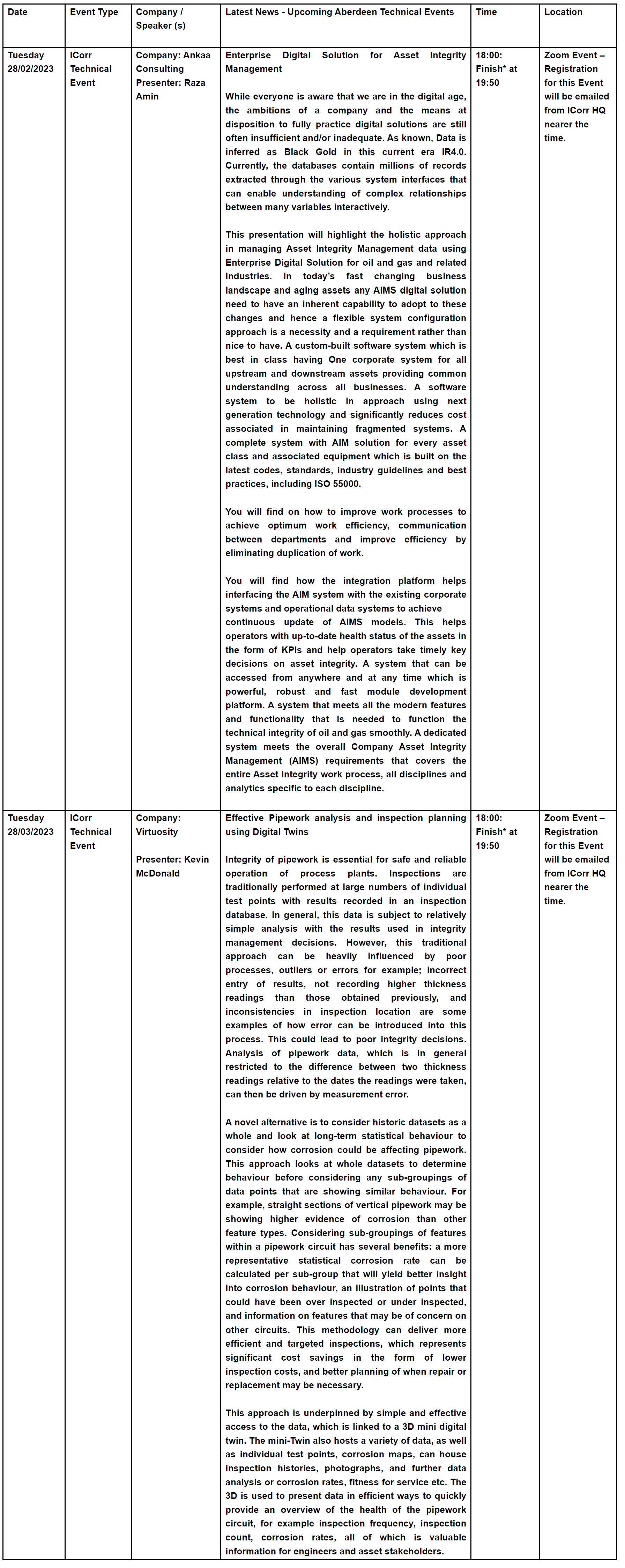The cart is empty!
Ask the Expert
The questions in this issue feature insulated stainless steel pipework, and transporting CO2
Question:
Should 304 stainless steel pipework be coated prior to insulation? CM
Answer:
Corrosion under insulation in austenitic stainless steel manifests itself in the form of chloride-induced stress corrosion cracking (CISCC), also referred to as external stress corrosion cracking (ESCC), as the source of chlorides is external to the process environment.
The mechanism of stress corrosion cracking (SCC) is well known in industry and can be found in lots of publications which are in the public domain. The mode of cracking failure is typically trans granular. There are a number of conditions that are in play when it comes SCC, as detailed below:
1. A susceptible 300 series austenitic stainless steel, in this case 304
2. Residual or applied surface tensile stresses
3. The presence of halides from either the environment of the insulation itself
4. Process temperatures leading to metal temperature in the range 50° to 150°C
5. An electrolyte (water)
All of the above are ever present, and hence the need to use specific coatings on stainless steel. The types of coating that can be employed are varied depending on the operating temperature, typically:
• Organic epoxy chemistry is capable of resisting cryogenic temperatures and up to 120/150C, depending on formula
• Epoxy phenolics/novolacs are suitable from cryogenic temperatures and up to 200/230C, again depending upon formula
• Inorganic coatings such as Inert Multipolymer Matrix, are also capable from cryogenic temperatures and up to 600C
These coatings when formulated correctly, using barrier pigmentation such as Micaeous Iron Oxide (MIO), aluminium flake or glassflake, will create a barrier to the ingress of chlorides to the stainless steel substrate.
There is also the matter of the insulation to consider when it is being used. It is well documented that with traditional insulation, and mineral based insulation with a metal jacket, that water will penetrate into the insulation system. The water will find a way through breakages in the metallic jacket or joints edges, and then it will soak through the insulation giving rise to CUI/CISCC conditions. Under certain operating conditions up to 177C, the traditional insulation could be replaced with a thermal insulation coating system (TIC) especially in the case where personal protection is required. This will remove the conditions which are required for CUI, and reduce the risk on CISCC, as no electrolyte is being held at the surface.
Therefore, a combination of a good barrier coating with high temperature resistance and a thermal insulation coating could be a very good choice in combatting both CUI and CISCC.
Neil Wilds, Global Product Director –
CUI/Testing, Sherwin-Williams, Protective & Marine Coatings.
Question:
Carbon capture and pipelines/storage – what are the limits of impurities when transporting CO2? PF
Answer:
Like many ‘Ask the Expert’ questions, there is no simple answer to this! Although general industry guidance on impurity limits is available from a number of sources [1-4], there are no internationally agreed specifications for CO2 composition during pipeline transport. Under current regulations, the responsibility lies with the pipeline operator to carry out their own assessment and specify impurity limits during the design phase of a given CO2 pipeline project. These limits can vary significantly depending on the composition of the CO2 stream, the economics of the purification technologies used and the operating conditions of the pipeline.
From a corrosion perspective, the most important impurity to consider is obviously water. When the water concentration is below its solubility limit in dense phase CO2 (~ 2500 ppm under typical pipeline operating conditions in the absence of other impurities) no corrosion will occur. However, the presence of other impurities can increase the likelihood of corrosive phases forming, either by reducing the water solubility or via chemical reactions between different impurities. Acid dropout is the most significant concern for pipeline operators, whereby highly corrosive aqueous phases, such as nitric and sulphuric acid, can form as a result of reactions between water, NOx, SOx, O2 and H2S impurities.
Assessment of the risk of water and acid dropout in CO2 pipelines due to the presence of multiple impurities is a complex process, which requires an understanding of the thermodynamics of fluid composition, the impact of operating temperature and pressure variations (including potential upset conditions) and interactions between impurities. The requirements for ship transport are typically more stringent than those for pipelines [5], with lowest temperatures representing the worst-case scenario.
Published corrosion rate data in the open literature should be treated with caution due to challenges in control of test parameters and the high degree of uncertainty around the correlation between laboratory test data and real world application. Combined with the relative lack of service experience in transport of CO2 captured from a range of industrial sources, this often leads to a degree of over-conservatism in materials selection. For CO2 specifications, thresholds in relation to acid drop out are set based on limited available data (often not lower than 25oC) and are therefore likely not conservative enough. The development of reliable standard test methods that are more representative of service conditions will go a long way towards addressing these issues.
A full description of the process for developing reliable CO2 impurity specifications for individual projects is clearly beyond the scope of this response but the interested reader is directed to the references below as a starting point.
References
1. DNV-RP-F104 – Design and operation of carbon dioxide pipelines, Recommended Practice, September 2021
2. Briefing on carbon dioxide specifications for transport, EU CCUS PROJECTS NETWORK, November 2019
3. DYNAMIS CO2 quality recommendations, EU DYNAMIS project D 3.1.3 report, June 2007
4. Materials challenges with CO2 transport and injection for carbon capture and storage, J. Sonke, W.M. Bos, S.J. Paterson, International Journal of Greenhouse Gas Control 114, 103601, 2022
5. Network Technology Guidance for CO2 transport by ship, ZEP/CCSA Report, March 2022
Gareth Hinds, NPL


